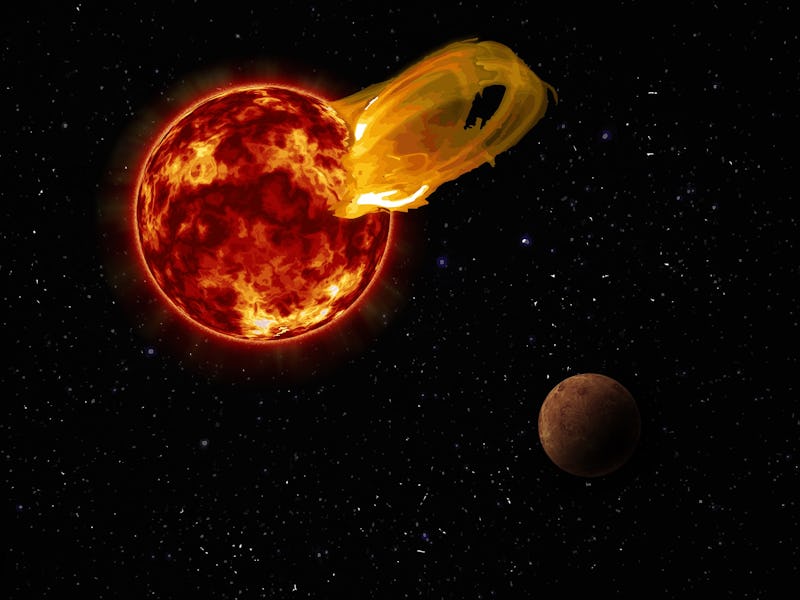Everyone's Favorite Exoplanet is Probably Totally Screwed

For all intents and purposes, Proxima b is a fine exoplanet. The Earth-like world is only about four light-years away from our pale blue dot. It seems nice, except for the fact it just got zapped by radiation from its host star, Proxima Centauri, making the chances of finding life there seriously low. Sorry, everyone.
According to a new study published February 26 in The Astrophysical Journal Letters, the European Southern Observatory’s Atacama Large Millimeter/submillimeter Array (ALMA) noticed Proxima b had one seriously crummy day last year.
On March 24, 2017, the planet was walloped by radiation from a massive solar flare. The flare was about “10 times brighter than our sun’s largest flares” and increased the Proxima Centauri’s overall brightness by about 1,000 times over 10 seconds, the ESO reports.
“It’s likely that Proxima b was blasted by high energy radiation during this flare,” the study’s lead author Meredith MacGregor, an astronomer at the Carnegie Institution for Science, Department of Terrestrial Magnetism in Washington, D.C., explained in a press release. “Over the billions of years since Proxima b formed, flares like this one could have evaporated any atmosphere or ocean and sterilized the surface, suggesting that habitability may involve more than just being the right distance from the host star to have liquid water.”
Artist's rendition of Proxima Centauri's flare back in March 2017.
Proxima b receives radiation from its M dwarf host star all the time, though the flares are usually much smaller than this one. But scientists have long suspected the planet might not be suitable for hosting life because it’d be difficult for anything to withstand giant flares of radiation like this one from March 2017.
Over time, suns store magnetic energy. A solar flare occurs when there’s an eruption of that magnetic energy, which sends highly charged particles off into space. If the flare is powerful enough, it can impact the atmospheres of other surrounding planets.
After considering this study, we think it’s reasonable to assume that any life Proxima b — if it ever existed — is very likely screwed.
“There is now no reason to think that there is a substantial amount of dust around Proxima Cen,” the study’s co-lead author, Carnegie Institute stronomer Alycia Weinberger, said in a statement. “Nor is there any information yet that indicates the star has a rich planetary system like ours.”